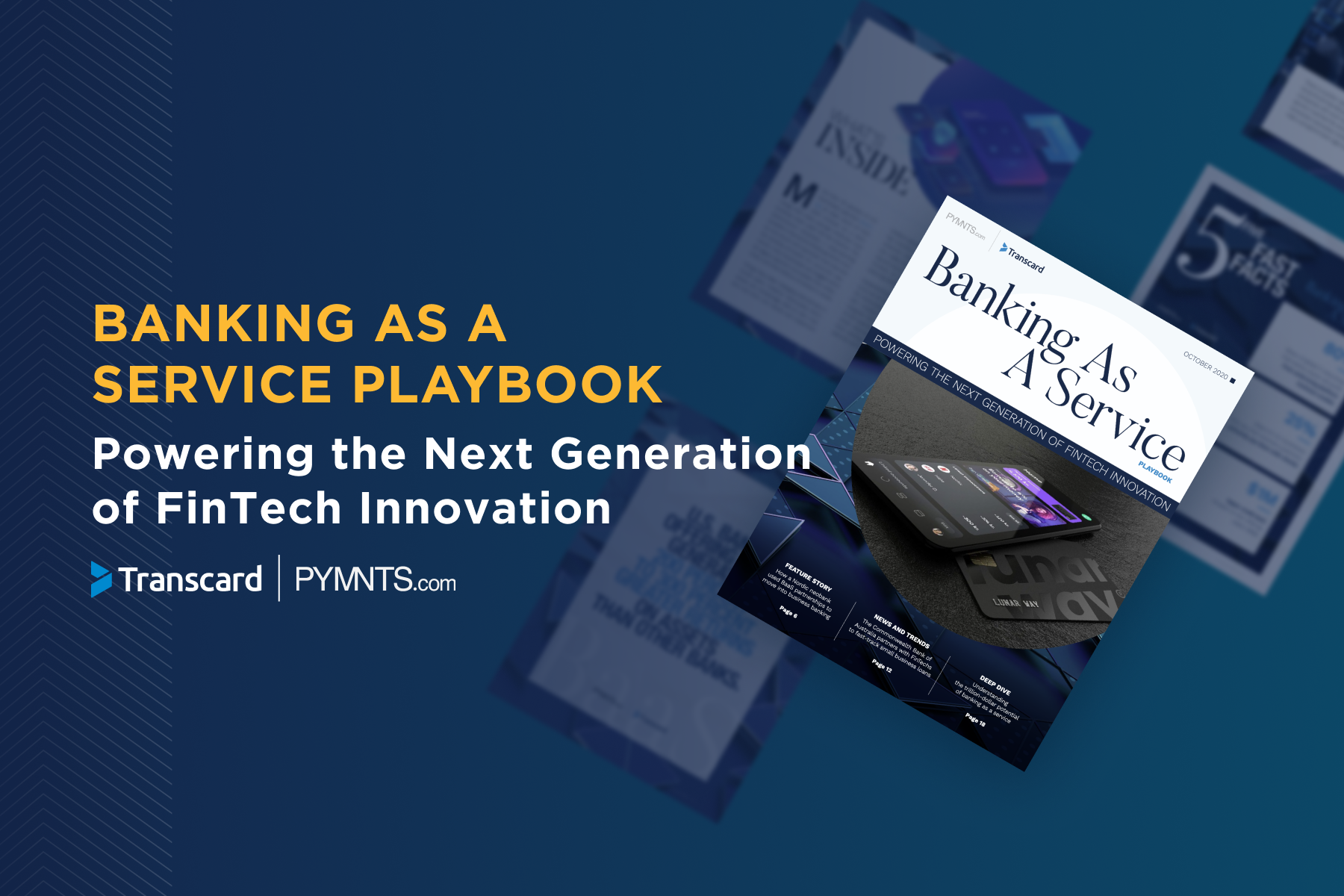Banking-as-a-Service Aligns FIs With New Consumer Demands
More opportunities for financial institutions (FIs) are materializing out of the COVID-19 mess, with two factors — payments choice and the loyalty it engenders — taking center stage in reformulating financial services for a changed consumer coping with multiple new realities.
Early entrants with the ability to match new products to consumer demand – and get them to market quickly – are enjoying an edge.
Banking-as-a-Service (BaaS) is making speed and mobility possible, particularly for core banking systems in need of immediate modernization. While there’s plenty of interest, FIs need to adopt a sense of urgency to match that of consumers.
As PYMNTS’ October Banking as a Service Playbook: Powering the Next Generation of FinTech Innovation, a collaboration with Transcard, notes:
“The unique position banks could enjoy in the shifting platform-based financial services landscape does not mean that they are adequately leveraging it.”
It reads on that:
“a recent study uncovered that a majority of banks and financial services organizations are only in the early stages of implementing cloud-based systems,”
with 18% saying they have deployed such systems, and 70% of respondents’ cloud projects in early testing stages.
“The findings suggest that FIs must find BaaS partners that can help them bridge this technology gap through open APIs and other tools,” according to PYMNTS’ new Tracker.
BaaS and Legacy Banking Pair Well
Open banking’s boost by the European Union (EU) kickstarted an evolution among FIs centered on consumer-centricity. That means personalization through analytics, with speed and at scale – all tasks at which BaaS excels.
“The United States has been slower to embrace open banking, yet its smaller banks have also been beneficiaries of the rising BaaS market, as they can charge higher interchange fees than large banks under existing regulations,” according to PYMNTS’ Banking as a Service Playbook.
Adding that “U.S. banks offering BaaS generated 200 percent to 300 percent greater returns on assets than other banks, according to one report,” the PYMNTS Playbook points out that “banks provide a less tangible asset when it comes to BaaS, one that is key when offering consumers new financial services: institutional trust.
A recent report found that consumers were considerably more likely to trust banks with their personal data than other institutions, with nearly 70 percent willing to do so.”
Flexibility Is in the Cloud
As more consumers across various demographics become aware of, then accustomed to, P2P instant money and real-time payments (RTP), as is happening right now, banks and FIs have a choice to make: dive in and get busy innovating for post-pandemic people or risk falling behind.
“RTP and some of these faster payment methods have been introduced, and there’s been adoption by some large banks, but to address the businesses’ needs, [banks may] still default back to some form of batch process – or, if there are APIs, they’re not holistically providing functionality end-to-end to address the businesses’ needs,”
Transcard CEO Greg Bloh told PYMNTS
“That’s where a financial institution can really bring a solid service to their customers by embracing a platform that addresses their customers’ needs flexibly, integrates into their core platform itself and integrates into the various payment modalities they support and want to build on,”
he says.
Highly configurable cloud systems are getting this done for more and more FIs.
“Flexibility is a defining characteristic of the BaaS model, and firms can take advantage of wide-ranging banking operations for both customer-facing or back-office purposes, allowing for organization-specific applications,” per the new Playbook.
The COVID-19 pandemic has strained businesses’ finances as well as banks’ balance sheets. It has also unleashed a large-scale migration to digital banking.
Providing superior, novel digital banking capabilities through BaaS may no longer be only the prerogative of innovative organizations, but that of any firm that hopes to thrive in the new reality.




